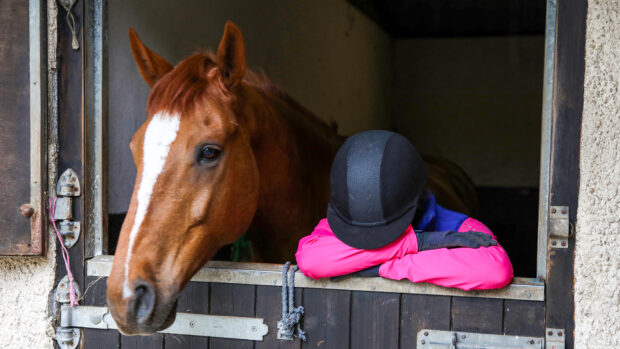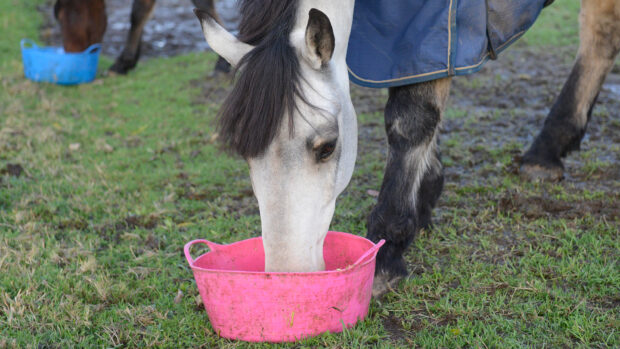Spillers’ equine nutritionist Clare Barfoot provides one H&H forum user with some helpful advice on how whether adding salt to feed is necessary and why table salt is preferable to electrolytes as a source of sodium
Q: “Should I add salt to feed? I was reading an article the other day that was recommending adding salt to feed even if horses have a salt lick. So I’m wondering if people do and if any improvements are seen? Both of my horses have free access Himalayan salt licks, and they use them. One of them can get through a 4kg one in a matter of weeks (two weeks was her record) and the other isn’t far behind her. With them being such enthusiastic consumers I’m not sure if adding salt to their feeds is the way to go for us. What are the benefits and drawbacks of feeding salt and do I need to add more into my horse’s feeds? Thanks.”
A: Firstly although everyone knows feeding salt is something to do with hydration, its role is often misunderstood. In basic terms, salt is the most common source of electrolytes, comprising sodium and chloride which alongside magnesium, potassium and calcium, are responsible for maintaining water balance within the body and play a vital role in nerve and muscle function.
When a horse sweats they obviously lose water from their body, but also a considerable amount of electrolyte. This is why you need to replace them in the diet. However for most horses in light work, providing a salt lick either in the stable or field is sufficient to meet their sodium requirements. The other main electrolytes such as potassium, magnesium and calcium will be supplied from their diet.
Continued below…
Related articles:
- H&H forum: find out what H&H readers suggested
- 19 super-fast facts about feeding your horse
- Read more expert feeding advice
For your horses there is no need to add salt into their feed as they have a salt block. Although consuming 4kg in two weeks is a little excessive — that’s more than 10 times their daily requirement, so this is worth keeping an eye on especially if they start drinking excessively. Some horses can become addicted to eating salt blocks and if this is the case, you may need to remove them and add a small amount ½-1 tbsp per day into their feed. For horses in harder work who are sweating regularly and/or travelling, adding in 1-3 tbsp of salt should cover typical electrolyte losses.
Although, there are many electrolyte products on the market, a lot of them don’t include sufficient levels of sodium making table salt the best option. In addition, many commercial electrolyte products contain other ingredients such as sugar and trace elements which are unnecessary.
Continued below…
A word of warning if you choose to use an electrolyte syringe — make sure your horse has plenty of access to fresh water or you could end up inadvertently dehydrating them even more as this will cause large fluid shifts into the gut. Electrolytes themselves do not hydrate your horse — they are always needed in conjunction with water.
So there you see, it doesn’t have to be so complicated. If you would like any further advice on electrolyte supplementation please call the SPILLERS Careline on 01908 22 66 26.




